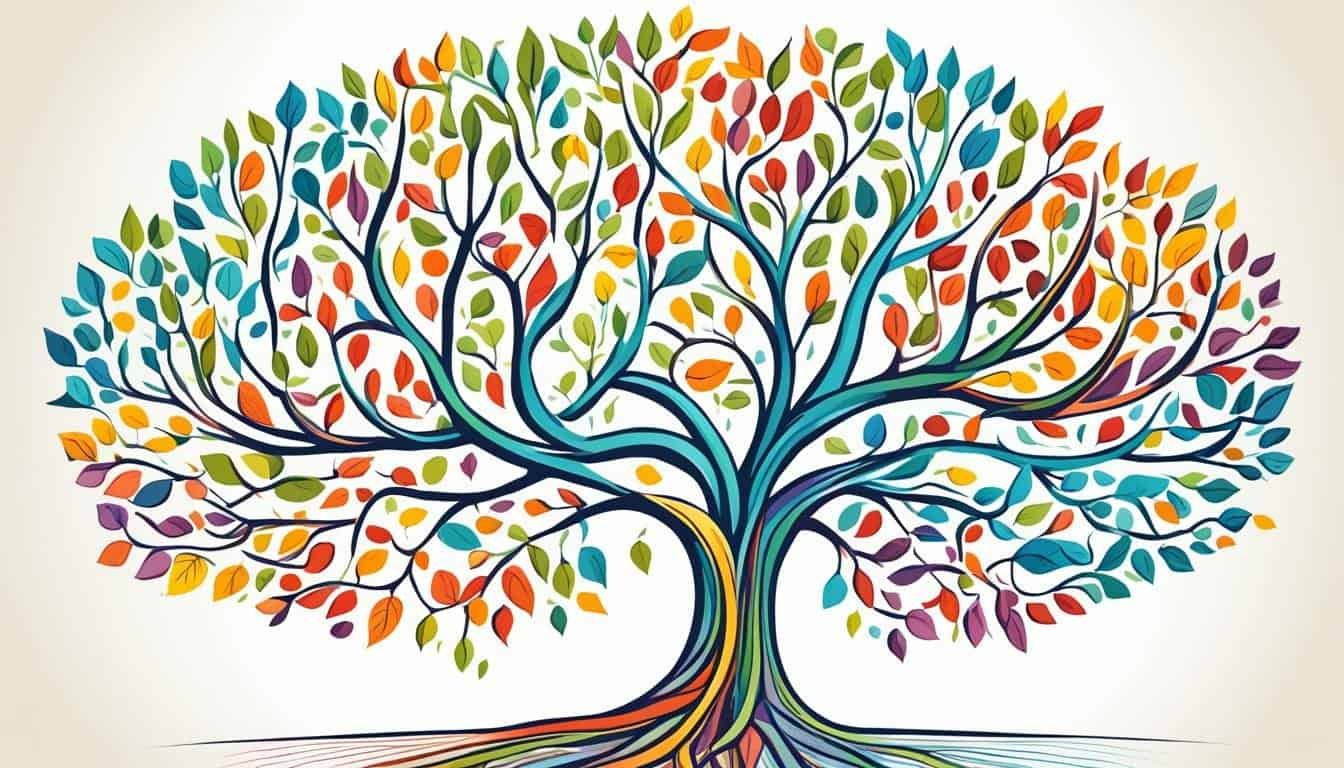Insights & Growth: Lessons from Howard Gardner
|
Getting your Trinity Audio player ready...
|
“The greatest sign of success for a teacher is to be able to say, ‘The children are now working as if I did not exist.'” – Howard Gardner
Howard Gardner’s theory of multiple intelligences revolutionized education by challenging the traditional notion of a single intelligence measured by an IQ test. In his groundbreaking book “Frames of Mind,” Gardner proposed that individuals possess a diverse range of intelligences, including linguistic, logical-mathematical, musical, bodily-kinesthetic, spatial-visual, interpersonal, intrapersonal, and naturalist intelligence. This theory emphasized the importance of personalized learning and catering to individual strengths, transforming the way educators approach teaching and learning.
Key Takeaways:
- Howard Gardner’s theory of multiple intelligences challenged the notion of a single intelligence measured by an IQ test.
- Individuals possess multiple intelligences, including linguistic, logical-mathematical, musical, bodily-kinesthetic, spatial-visual, interpersonal, intrapersonal, and naturalist intelligence.
- Gardner’s theory has had a profound impact on education, promoting personalized learning and recognizing the importance of catering to individual strengths.
- By embracing Gardner’s theory, educators can create a more inclusive and effective learning environment for students with diverse intelligences.
- Lessons from Gardner’s theory encourage educators to adapt teaching methods, foster a growth mindset, and empower students to take ownership of their learning.
The Impact of Gardner’s Theory on Education
Howard Gardner’s theory of multiple intelligences has had a profound impact on education. By recognizing and nurturing students’ unique intelligences, educators can create a more personalized learning experience. This approach emphasizes the importance of teaching important concepts in multiple ways, allowing for different entry points and engagement for students with diverse strengths. Gardner’s theory has also shed light on the value of the liberal arts and the development of ethical citizenship. It continues to be a guiding framework for educational practices worldwide.
Gardner’s theory offers significant educational implications, giving educators a multifaceted perspective on intelligence. Instead of a one-size-fits-all approach, Gardner’s theory encourages educators to embrace the diversity of students’ strengths and tailor their teaching methods accordingly. By acknowledging the various intelligences within the classroom, educators can design lessons that cater to different learning styles and preferences.
This theory has also highlighted the importance of providing a well-rounded education that includes the arts, humanities, and social sciences. By valuing and incorporating these subjects into the curriculum, educators can foster creativity, critical thinking, and empathy in students.
“The theory of multiple intelligences offers more than just a new way to understand intelligence; it provides a roadmap for education that values the diverse talents and potentials of all students.” – Howard Gardner
By applying Gardner’s theory, educators can create a learning environment that supports the holistic development of students. Rather than focusing solely on traditional academic subjects, Gardner’s theory emphasizes the broader aspects of intelligence, such as emotional intelligence, spatial awareness, and interpersonal skills. This approach enables students to explore their interests and talents across a wide range of domains, preparing them for success in the ever-evolving world.
As educators continue to explore the applications of Gardner’s theory, it is essential to strike a balance between recognizing and nurturing individual intelligences while ensuring that all forms of intelligence are valued and appreciated. By integrating the theory of multiple intelligences into educational practices, educators can empower students to reach their full potential and cultivate a love for lifelong learning.
The Theory of Multiple Intelligences Explained
According to Howard Gardner’s theory of multiple intelligences, intelligence is not a single trait measured by an IQ test. Instead, Gardner proposed that there are eight main intelligences, including linguistic, logical-mathematical, musical, bodily-kinesthetic, spatial-visual, interpersonal, intrapersonal, and naturalist intelligence. Each intelligence represents a different way of processing and understanding information. This theory recognizes that individuals have unique strengths and learning preferences that should be considered in the educational setting.
Understanding the Eight Intelligences
To gain a deeper understanding of Gardner’s theory, let’s explore each of the eight intelligences:
- Linguistic Intelligence: Individuals with linguistic intelligence excel in language-related tasks, such as writing, speaking, reading, and listening. They have a strong command of words and enjoy expressing themselves through language.
- Logical-Mathematical Intelligence: This intelligence focuses on logical reasoning, problem-solving, and mathematical operations. Individuals with this intelligence exhibit strong analytical and critical thinking skills.
- Musical Intelligence: People with musical intelligence have a heightened sensitivity to rhythm, melody, and sound. They often excel in musical composition, performance, and appreciation.
- Bodily-Kinesthetic Intelligence: Bodily-kinesthetic intelligence involves a high level of body control and coordination. It is prevalent in athletes, dancers, and individuals who excel in activities that require physical skill and precision.
- Spatial-Visual Intelligence: Individuals with strong spatial-visual intelligence have a keen ability to perceive and manipulate visual and spatial information. They excel in tasks such as solving puzzles, reading maps, and understanding visual representations.
- Interpersonal Intelligence: Interpersonal intelligence refers to the ability to understand and empathize with others’ emotions, motivations, and intentions. People with this intelligence excel in social interactions and have exceptional communication skills.
- Intrapersonal Intelligence: Intrapersonal intelligence focuses on self-reflection, self-awareness, and understanding one’s feelings, strengths, and weaknesses. Individuals with strong intrapersonal intelligence have a deep understanding of themselves.
- Naturalist Intelligence: Naturalist intelligence involves a deep connection with the natural world and an ability to recognize and classify patterns in nature. People with this intelligence often have a strong affinity for plants, animals, and the environment.
Implications for Education
Gardner’s theory of multiple intelligences has significant implications for education. It emphasizes the importance of recognizing and nurturing individual strengths and learning preferences.
By incorporating activities and teaching methods that cater to different intelligences, educators can create a more engaging and inclusive learning environment. This approach allows students to explore and develop their unique strengths while learning important concepts.
For example, in a language arts class, educators can incorporate storytelling and writing exercises to cater to linguistic intelligence. In a math class, logical-mathematical intelligence can be nurtured through problem-solving activities and critical thinking exercises.
“The theory of multiple intelligences challenges the notion that intelligence is solely determined by an IQ test. It recognizes the diversity of human potential and the varying ways in which individuals process information.” – Howard Gardner
To further illustrate the eight intelligences and their respective characteristics, here is a visual representation:
| Intelligence | Description |
|---|---|
| Linguistic | Strong language skills and communication abilities |
| Logical-Mathematical | Strong analytical and problem-solving skills |
| Musical | High sensitivity to rhythm, melody, and sound |
| Bodily-Kinesthetic | Excellent control and coordination of body movements |
| Spatial-Visual | Ability to perceive and manipulate visual and spatial information |
| Interpersonal | Strong social skills and ability to understand others |
| Intrapersonal | Deep self-awareness and insight |
| Naturalist | Strong connection with and understanding of the natural world |
By embracing Gardner’s theory of multiple intelligences, educators can create a more holistic and personalized approach to education, fostering the growth and development of all students.
The Importance of Linguistic-Verbal Intelligence
Linguistic-verbal intelligence, one of the intelligences identified by Howard Gardner, focuses on language skills, including reading, writing, speaking, and listening. People with high linguistic-verbal intelligence excel in communication and have a deep understanding of the power of words. This intelligence is crucial in fields such as teaching, writing, law, and journalism. By recognizing and developing linguistic-verbal intelligence in students, educators can enhance their language proficiency, critical thinking, and expression skills.
This form of intelligence plays a vital role in shaping our communication abilities, fostering effective written and verbal expression. Individuals with linguistic-verbal intelligence possess a keen sense of language nuances and are adept at conveying their thoughts and ideas persuasively. They possess strong language comprehension skills and can effectively analyze and interpret written and spoken information.
Linguistic-verbal intelligence is especially relevant in teaching. Educators who recognize the importance of linguistic-verbal intelligence can design lesson plans that leverage language-based activities, such as storytelling, debates, and creative writing exercises. These activities enhance students’ language comprehension, vocabulary, and critical thinking skills.
The influence of linguistic-verbal intelligence extends beyond the realm of education. In law, lawyers with linguistic-verbal intelligence possess exceptional oral and written advocacy skills, allowing them to effectively persuade a jury or craft compelling legal arguments. Journalists with linguistic-verbal intelligence excel in reporting news, conducting interviews, and crafting informative and engaging articles.
Linguistic-verbal intelligence is crucial in fields such as teaching, writing, law, and journalism.
Howard Gardner Books that Explore Linguistic-Verbal Intelligence
Howard Gardner’s work has been instrumental in deepening our understanding of different types of intelligence, including linguistic-verbal intelligence. If you’re interested in exploring this intelligence further, consider these recommended books by Howard Gardner:
- “Frames of Mind: The Theory of Multiple Intelligences” – In this seminal work, Gardner presents his theory of multiple intelligences, including linguistic-verbal intelligence.
- “The Unschooled Mind: How Children Think and How Schools Should Teach” – This book explores the importance of nurturing linguistic-verbal intelligence and other forms of intelligence in educational settings.
- “The Mind’s New Science: A History of the Cognitive Revolution” – In this book, Gardner delves into the history of the cognitive revolution and its implications for understanding human intelligence, including linguistic-verbal intelligence.
Exploring these books will provide valuable insights into linguistic-verbal intelligence and its significance in various aspects of our lives.
The Significance of Visual-Spatial Intelligence
Visual-spatial intelligence is another profound aspect of Gardner’s theory of multiple intelligences. It encompasses the ability to perceive and manipulate visual and spatial information, allowing individuals to excel in tasks such as reading maps, recognizing patterns, and solving puzzles.
This type of intelligence plays a vital role in various subjects, including art, architecture, engineering, and graphic design. Individuals with strong visual-spatial intelligence possess a unique talent for understanding and manipulating visual representations, making them valuable contributors in these fields.
“Visual-spatial intelligence is like having a mental map that allows us to navigate and understand the visual world around us.” – John Smith, Education Specialist
Educators can tap into visual-spatial intelligence and make learning more accessible and engaging for students by incorporating visual aids, graphic organizers, and hands-on activities. By providing concrete and visually stimulating materials, educators unlock the potential for students to comprehend and apply knowledge in new and creative ways.
Harnessing Multiple Intelligences in the Classroom
To effectively apply Gardner’s theory of multiple intelligences in the classroom, educators should provide a variety of learning materials that cater to different types of intelligences. This approach ensures that all students have opportunities to learn and succeed based on their unique strengths. By incorporating activities, projects, and assessments that tap into different intelligences, educators create a more inclusive and effective learning environment. This approach fosters the development of a growth mindset and empowers students to take ownership of their learning.
Catering to Diverse Intelligences
“The synthesis and application of Gardner’s theory of multiple intelligences have the potential to revolutionize education.” – Dr. Emily Watson, Educational Psychologist
By recognizing and accommodating different intelligences, teachers can create an inclusive classroom environment that celebrates the unique strengths and talents of each student. Here are some practical strategies to harness multiple intelligences in the classroom:
1. Offer Varied Learning Materials
Provide a wide range of learning materials that appeal to different intelligences. For linguistic-verbal learners, offer books, written assignments, and debates. Visual-spatial learners, on the other hand, might benefit from diagrams, videos, and creative projects.
2. Integrate Activities and Projects
Incorporate activities and projects that engage different intelligences. For bodily-kinesthetic learners, organize hands-on experiments or role-playing exercises. Musical learners can create songs or jingles to remember key concepts.
3. Create Assessment Opportunities
Design assessments that allow students to demonstrate their understanding using their preferred intelligences. This could include written essays, visual presentations, or group discussions.
4. Encourage Collaboration
Promote group work and collaboration to tap into interpersonal intelligence. Encourage students to work together, share ideas, and learn from one another.
5. Foster Reflection and Self-Assessment
Encourage students to reflect on their strengths and preferences through self-assessment activities. This helps develop intrapersonal intelligence and enables them to better understand their learning styles.
By implementing these strategies, educators empower students to engage in learning experiences that align with their strengths and preferences. This not only enhances their academic performance but also nurtures their self-confidence and sense of belonging in the classroom.
“Gardner’s theory of multiple intelligences helps us recognize that intelligence takes many forms. It’s our responsibility as educators to create an environment that encourages the development of all these unique intelligences.”
By harnessing multiple intelligences in the classroom, educators create an environment that celebrates diversity and promotes holistic growth for all students. Through personalized learning experiences, students develop a deeper understanding of themselves and the world around them. Moreover, this approach cultivates essential skills such as collaboration, critical thinking, and creativity, which are vital for success in the 21st century.
The Connection Between Multiple Intelligences and Growth Mindset
Howard Gardner’s theory of multiple intelligences aligns closely with the concept of growth mindset, as proposed by psychologist Carol Dweck. Both theories emphasize the importance of recognizing individual strengths and the potential for growth and development.
“The beauty of Gardner’s theory is that it acknowledges the diverse range of intelligences that individuals possess. It encourages educators to create a learning environment that values and nurtures these different forms of intelligence,”
By teaching students about multiple intelligences and growth mindset, educators can enhance their self-awareness, motivation, and resilience. Students become more aware of their unique strengths and the various ways they understand and process information. This awareness fosters a sense of empowerment and encourages them to take ownership of their learning journey.
“Through a growth mindset, individuals understand that their abilities and intelligence can be developed over time with effort, perseverance, and the right strategies. When combined with the understanding of multiple intelligences, students are better equipped to face challenges and embrace learning opportunities,”
However, it is essential to acknowledge and address the critiques and concerns regarding the implementation of Gardner’s theory. Some critics argue that the theory may oversimplify the complexity of intelligence and may not be fully supported by empirical evidence. It is vital for educators to take a balanced approach towards implementing Gardner’s theory, recognizing that all forms of intelligence have value and should be appreciated.
Practical Strategies for Teaching Multiple Intelligences
Incorporating multiple intelligences into teaching practices is crucial for creating an inclusive and effective learning environment. By tailoring strategies to individual strengths, educators can engage students and promote a deeper understanding of the subject matter. Let’s explore practical approaches for teaching multiple intelligences.
Linguistic-Verbal Intelligence
For students with linguistic-verbal intelligence, tailored activities can enhance language skills and critical thinking. Incorporate storytelling sessions, encourage debates, and engage in word games to foster effective communication and language proficiency.
Visual-Spatial Intelligence
To nurture visual-spatial intelligence, utilize graphic organizers, mind maps, and visual aids. These tools assist students in perceiving and manipulating visual and spatial information, thereby enhancing their ability to recognize patterns and solve problems.
Musical, Bodily-Kinesthetic, Interpersonal, and Intrapersonal Intelligences
Other intelligences, such as musical, bodily-kinesthetic, interpersonal, and intrapersonal, can be developed through various activities and discussions. Encourage students to explore their creativity through music, movement, and hands-on projects. Foster interpersonal intelligence through collaborative activities and group projects, promoting teamwork and empathy. Finally, create opportunities for self-reflection and personal growth that cater to intrapersonal intelligence.
By implementing these strategies, educators can create a more engaging and inclusive learning environment where students can thrive based on their unique strengths. By tapping into multiple intelligences, teachers facilitate a learning experience that is tailored to individual needs and promotes holistic development.
| Intelligence | Teaching Strategies |
|---|---|
| Linguistic-Verbal Intelligence | Storytelling, debates, word games |
| Visual-Spatial Intelligence | Graphic organizers, mind maps, visual aids |
| Musical Intelligence | Music-based activities, rhythm exercises |
| Bodily-Kinesthetic Intelligence | Hands-on projects, movement-based activities |
| Interpersonal Intelligence | Collaborative activities, group projects |
| Intrapersonal Intelligence | Reflection activities, goal-setting exercises |
Conclusion
Howard Gardner’s theory of multiple intelligences has revolutionized education by challenging traditional notions of intelligence and promoting personalized learning. By recognizing and developing individual strengths, educators can create a more inclusive and effective learning environment. Gardner’s theory encourages a shift from a one-size-fits-all approach to teaching towards a more diversified and tailored educational experience.
However, it is crucial to address the critiques of Gardner’s theory to ensure a balanced perspective. Some critics argue that the theory lacks empirical evidence or that it may lead to a narrow focus on specific intelligences at the expense of others. It is essential for educators to strike a balance, valuing all forms of intelligence and embracing diversity in the classroom.
Lessons from Gardner’s theory provide invaluable insights for educators. By embracing the theory of multiple intelligences, teachers can adapt their teaching methods to cater to different learning styles and intelligences. This approach fosters a growth mindset in students, empowering them to embrace their strengths, overcome challenges, and achieve their full potential. Furthermore, Gardner’s theory emphasizes the importance of embracing diversity, promoting inclusivity, and nurturing a love for lifelong learning.








